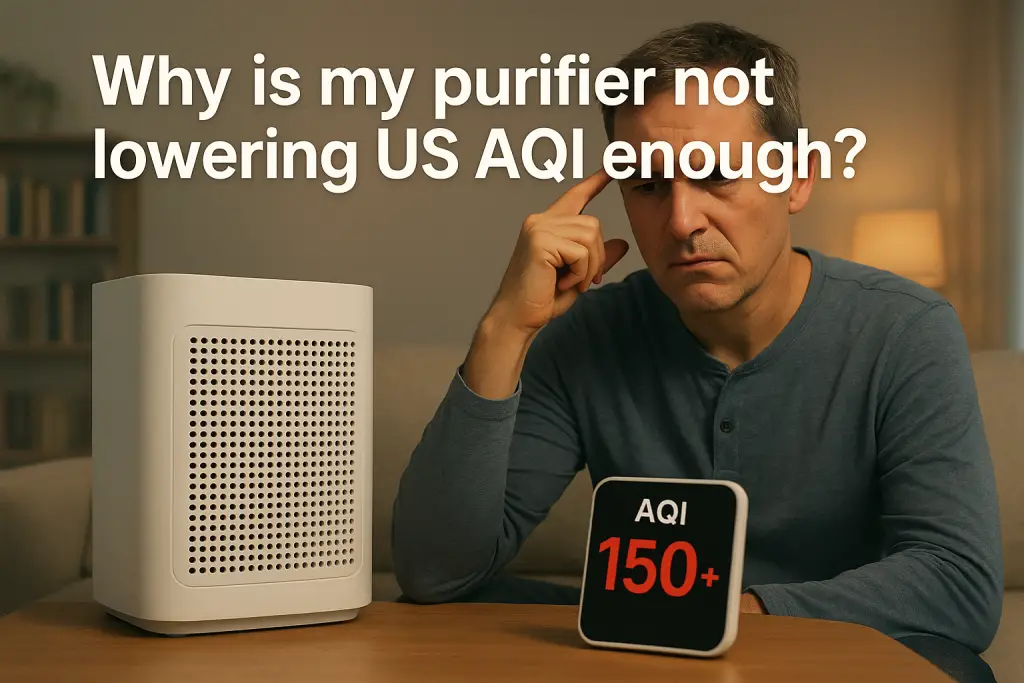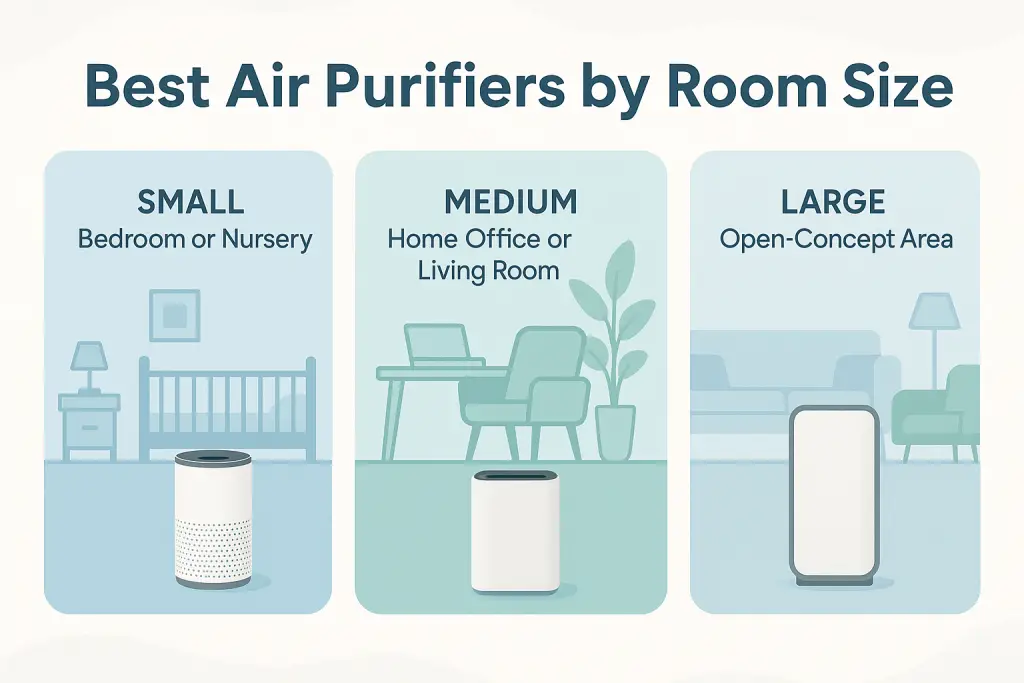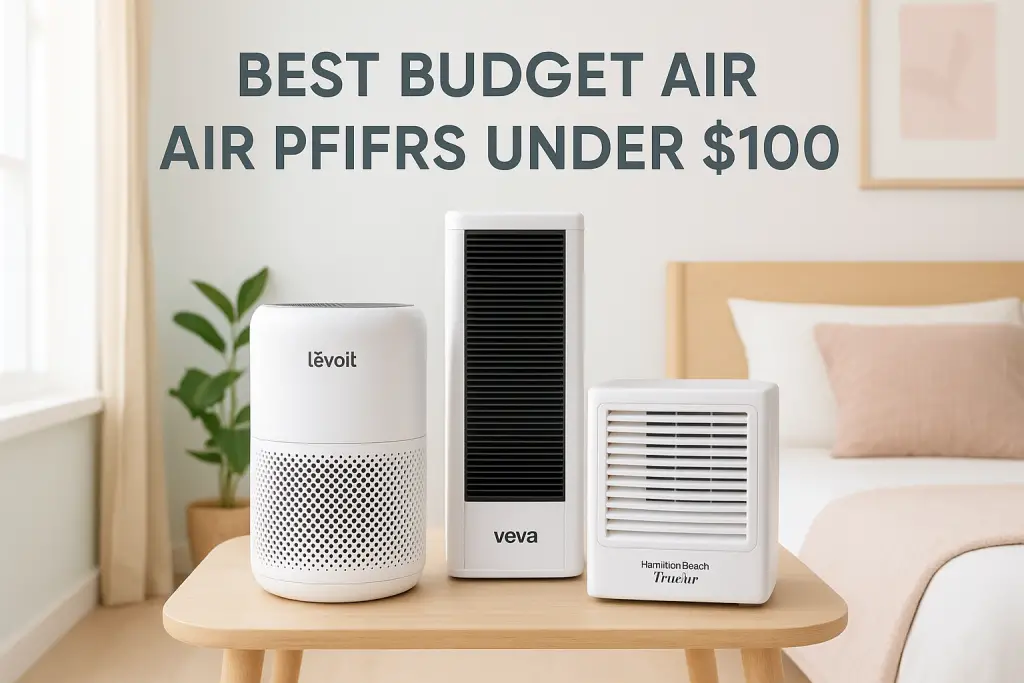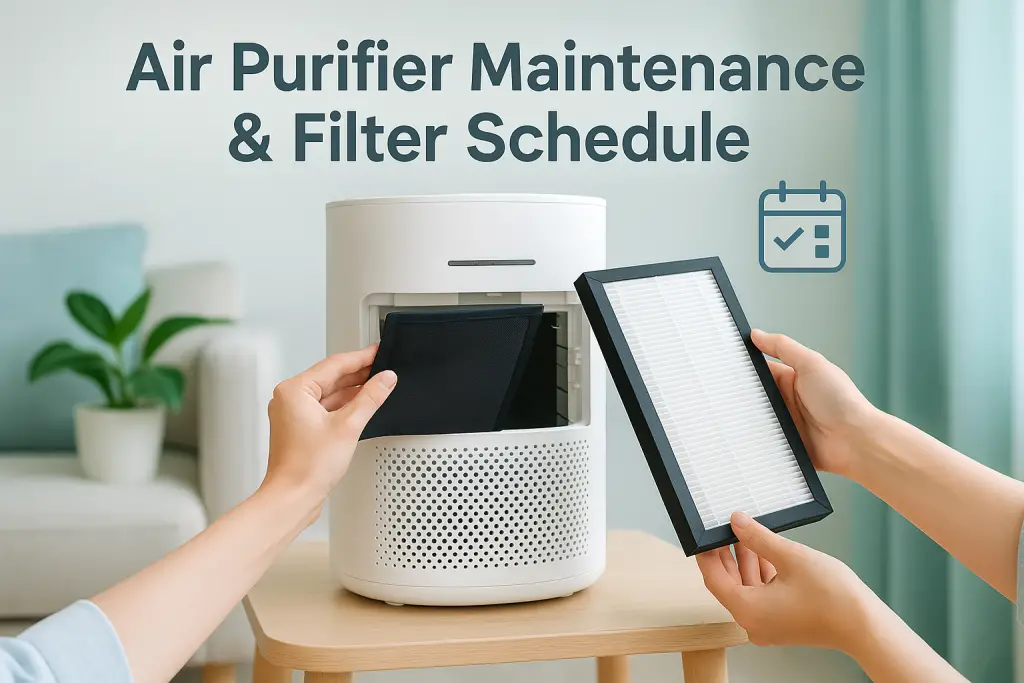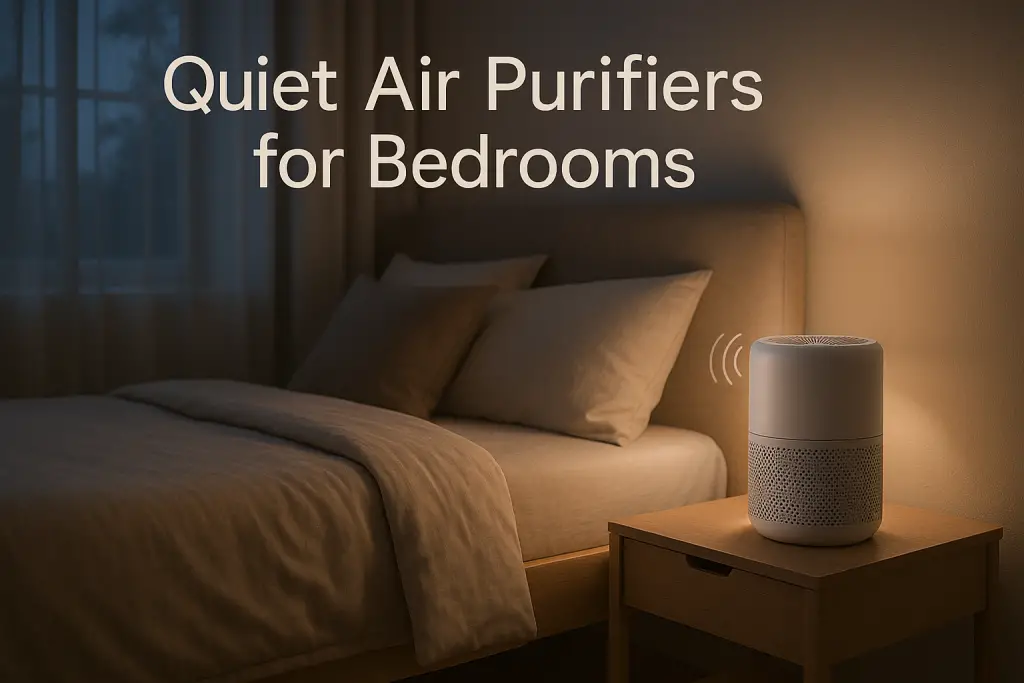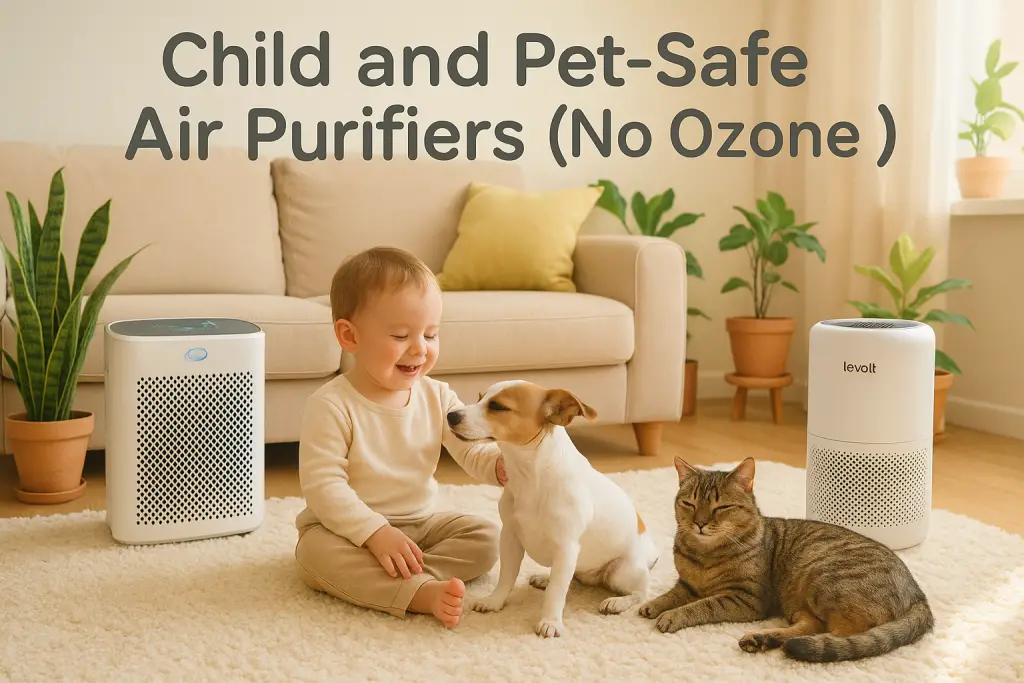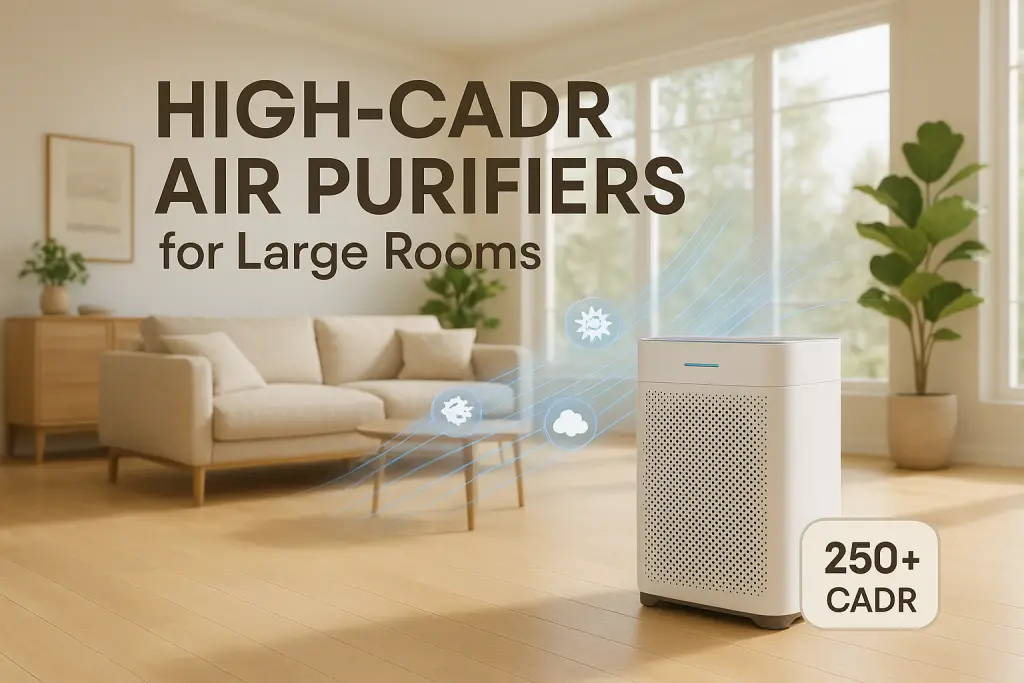When your air purifier doesn’t seem to be lowering US AQI readings as expected, it can be frustrating and concerning. You invested in an air purifier to improve your indoor air quality, but your air quality monitor still shows high readings. This disconnect between expectation and reality is common among air purifier owners who monitor their indoor air quality. Before assuming your device is defective, understand that several factors can limit your air purifier’s ability to reduce AQI numbers. This comprehensive guide explores the science behind air purification, identifies common issues, and provides practical solutions to help you achieve cleaner indoor air.
Understanding US AQI and Air Purifier Capabilities
Before troubleshooting your specific situation, it’s essential to understand what US AQI actually measures and how air purifiers interact with these measurements. The US Air Quality Index (AQI) is a standardized system that communicates how clean or polluted the air is using a numerical scale from 0 to 500. This scale is divided into six color-coded categories, each representing different levels of health concern:
- 0-50 (Green): Good
- 51-100 (Yellow): Moderate
- 101-150 (Orange): Unhealthy for sensitive groups
- 151-200 (Red): Unhealthy
- 201-300 (Purple): Very unhealthy
- 301-500 (Maroon): Hazardous
AQI calculations factor in several pollutants, including:
- PM2.5 (particles smaller than 2.5 micrometers)
- PM10 (particles smaller than 10 micrometers)
- Ozone (O3)
- Carbon monoxide (CO)
- Sulfur dioxide (SO2)
- Nitrogen dioxide (NO2)
Standard air purifiers with HEPA filters excel at capturing particulate matter (PM2.5 and PM10) but may not address gaseous pollutants like VOCs or ozone without specialized filters. If your indoor AQI is influenced by these gaseous pollutants, a standard HEPA filter alone may not significantly reduce your readings.
When ozone or other gaseous pollutants are present, you’ll need ozone-free purifiers with activated carbon or specialized media designed to address these specific contaminants.
The Science Behind Air Purifier Effectiveness
Air purifiers work on specific principles that directly impact their ability to lower AQI readings. One key concept is Clean Air Delivery Rate (CADR), which measures how much filtered air an air purifier delivers. CADR is expressed in cubic feet per minute (CFM) and typically provided for three pollutant types: dust, smoke, and pollen.
The air exchange rate is another critical factor, representing how many times the air purifier can filter the entire room’s air per hour. Most experts recommend 4-6 air changes per hour for effective filtration. You can calculate this using:
Air Changes Per Hour = (Purifier’s CADR × 60) ÷ Room Volume in cubic feet
Particle size also matters significantly. While HEPA filters can capture 99.97% of particles as small as 0.3 microns, their efficiency varies with particle size. Some particles (around 0.3 microns) are more challenging to capture than both larger and smaller particles due to how they move through air.
Air purification is a rate-based process. Your purifier continuously cleans air while new pollutants are introduced. This creates a dynamic equilibrium that takes time to shift toward cleaner air, not an instant improvement.
What Your US AQI Monitor Is Actually Measuring
Your air quality monitor uses specific technologies that influence the readings you’re seeing. Most consumer-grade air quality monitors use optical particle counters that shine light through air and measure scattered light when particles pass through. These are effective for detecting particulate matter but have limitations:
- Calibration drift over time
- Humidity interference (high humidity can register as particles)
- Inconsistent sensitivity across different particle sizes
- Limited ability to detect gaseous pollutants
Different monitors use different algorithms to convert raw sensor data into AQI values, leading to variations between devices. Professional-grade monitoring equipment used by environmental agencies costs thousands of dollars and undergoes regular calibration, while consumer devices typically use less expensive sensors with varying accuracy.
If you’re comparing readings between your purifier’s built-in sensor and a separate monitor, they may use different measurement technologies leading to discrepancies.
Why is my purifier not lowering US AQI enough?
Based on scientific research and air quality expert insights, these are the most common reasons your air purifier might not be reducing AQI readings as expected.
Reason #1: Insufficient Air Purifier Capacity for Your Space
One of the most common reasons for disappointing AQI reduction is using an air purifier that’s too small for your space. Many manufacturers list square footage coverage that assumes ideal conditions or just one air change per hour, which is insufficient for effective air cleaning.
To properly size your air purifier:
- Calculate your room’s volume in cubic feet (length × width × height)
- Determine desired air changes per hour (ACH) – aim for at least 4-5 ACH
- Calculate minimum CADR needed: (Room volume ÷ 60) × desired ACH
For example, a 12′ × 15′ room with 8′ ceilings equals 1,440 cubic feet. For 5 air changes per hour, you’d need a CADR of at least 120 CFM (1,440 ÷ 60 × 5 = 120).
Many people unknowingly purchase units that are rated for spaces much larger than they can effectively clean. When deciding between whole-home vs. room purifiers, remember that dedicated room units often provide better localized air cleaning than whole-home solutions.
Reason #2: Suboptimal Placement Reducing Effectiveness
Even a properly sized air purifier can underperform if it’s not positioned correctly within your space. Common placement mistakes include:
- Placing the unit in corners or against walls where airflow is restricted
- Positioning behind furniture that blocks air circulation
- Placing too close to curtains, bedding, or other objects that can obstruct intake
- Setting up in areas with limited air movement or “dead zones”
For optimal performance, place your air purifier:
- In the center of the room when possible
- At least 3 feet away from walls and furniture
- Near pollution sources (if targeting specific sources)
- Away from open windows or drafty areas
Test different placements by taking AQI readings after the purifier has run for 1-2 hours in each position to find the optimal location for your specific room layout.
Reason #3: Filter Maintenance and Replacement Issues
Your air purifier’s filter efficiency dramatically decreases over time, which can result in persistently high AQI readings. Many users follow manufacturer-recommended replacement schedules without considering that actual filter life depends on your specific air quality conditions.
Signs your filter needs replacement earlier than scheduled:
- Visible discoloration or dirt buildup
- Decreased airflow from the output
- Unusual noises from the unit
- Return of allergic symptoms or odors
- Steadily increasing AQI readings
If you live in a high-pollution area, have pets, or frequently cook, your filters may need replacement 2-3 times more often than manufacturer guidelines suggest. Some purifiers have washable pre-filters that require weekly or monthly cleaning for optimal performance.
When replacing filters, ensure you’re using genuine replacements designed for your specific model. Aftermarket filters may not provide the same filtration efficiency.
Reason #4: Continuous Introduction of New Pollutants
Your air purifier might be working correctly, but new pollutants may be entering your indoor environment faster than they can be removed. Indoor activities can generate significant amounts of particulate matter and gaseous pollutants:
| Activity | Pollutants Generated | AQI Impact |
|---|---|---|
| Cooking (especially frying/high-heat) | PM2.5, PM10, VOCs | Can spike AQI by 50-300+ points |
| Burning candles/incense | PM2.5, VOCs | Can increase AQI by 30-100+ points |
| Vacuuming without HEPA | PM10, dust mites, allergens | Can increase AQI by 20-50 points |
| Cleaning with chemical products | VOCs, chemical fumes | May not register on particle counters |
Even activities in adjacent rooms or apartments can impact your readings. If you frequently burn incense, you might need specific purifiers designed to handle incense smoke more effectively than standard units.
Common sources of continuous pollutant introduction include:
- Open windows during high outdoor pollution
- Pets shedding dander and bringing in outdoor particles
- Household dust from textiles, paper products, and skin cells
- Off-gassing from new furniture, carpets, or renovations
- Regular household activities like cooking and cleaning
Reason #5: Building Characteristics Affecting Indoor-Outdoor Air Exchange
Your home’s construction, age, and ventilation system play significant roles in how outdoor pollution affects your indoor AQI readings. Even with windows closed, buildings are not airtight. Air infiltration occurs through:
- Gaps around doors and windows
- Electrical outlets and fixtures
- Ventilation systems and exhaust fans
- Structural cracks and penetrations
- Chimneys and vents
Older homes typically have infiltration rates of 0.5-1.0 air changes per hour even with everything closed, meaning outdoor air constantly enters your home. During high outdoor pollution events like wildfires, this continuous introduction of pollutants can overwhelm your purifier’s capacity.
HVAC systems can also pull in outdoor air, especially if filters are dirty or insufficient. Central heating and cooling can distribute pollutants throughout your home, making localized purification more challenging.
How to Verify If Your Air Purifier Is Actually Working
Before investing in additional solutions, let’s verify that your air purifier is functioning properly with these testing methods.
Using Controlled Tests to Measure Performance
This scientific testing protocol will help you determine if your air purifier is functioning as expected:
- Select a small, closed room (bedroom or office)
- Close all windows and doors
- Take baseline AQI readings at multiple points in the room
- Introduce a controlled pollutant source (light a candle, then extinguish)
- Allow AQI to rise and stabilize (usually 15-20 minutes)
- Turn purifier on maximum setting
- Record AQI readings at 5, 15, 30, and 60 minutes
You should see a steady decline in AQI readings. If your purifier is functioning correctly, you should observe at least a 50% reduction in particulate matter within 30-60 minutes in a properly sized room.
Visual indicators that your purifier is working include:
- Strong, consistent airflow from the output
- Reduced dust accumulation on surfaces
- Filter discoloration when inspected
- Reduction in odors over time
When to Suspect Air Quality Monitor Issues
Sometimes, the problem isn’t with your air purifier but with the device measuring air quality. Common signs of air quality monitor inaccuracy include:
- Readings that don’t change despite obvious air quality improvements
- Drastically different readings between similar devices
- Readings affected by humidity changes
- Consistently maxed-out or minimal readings
- Erratic fluctuations without apparent cause
To check your monitor’s accuracy:
- Place it next to another air quality monitor and compare readings
- Test in various conditions (after cooking, early morning, etc.)
- Check if readings change when moving between rooms with obvious air quality differences
- Contact the manufacturer about calibration procedures
Consumer-grade monitors can drift out of calibration over time or may be affected by other environmental factors like temperature and humidity.
Practical Solutions to Improve Your Air Purifier’s Effectiveness
Based on scientific principles and expert recommendations, here are proven strategies to enhance your air purifier’s performance and achieve lower AQI readings.
Optimizing Your Current Air Purifier Setup
Before investing in additional equipment, maximize your existing air purifier’s performance with these optimization techniques:
- Run at higher fan speeds: Many users run purifiers on low settings for noise reasons, but this significantly reduces air cleaning capacity. Even running on high for 1-2 hours, then reducing to medium can make a big difference.
- Create a clean room concept: Focus on one room (typically bedroom) by keeping doors closed and using door draft stoppers to create a more controllable environment.
- Use timing strategies: Run on high when you’re away, switching to lower settings when present.
- Enhance airflow: Use a small fan to improve air circulation toward the purifier.
- Regular maintenance: Clean pre-filters weekly and check main filters monthly.
- Address specific pollution sources: Place purifier between you and known pollution sources.
These adjustments cost nothing but can significantly improve performance. When shopping for a bedroom unit, many users prioritize quiet air purifiers for bedrooms that won’t disturb sleep, but remember that lower noise often means reduced cleaning power.
When and How to Use Multiple Air Purifiers
For larger spaces or severe pollution situations, a strategic multi-purifier approach can significantly improve your results. Multiple smaller units often perform better than a single large unit because:
- They create more comprehensive coverage throughout the space
- They can be positioned strategically near pollution sources
- They maintain effectiveness even if one unit requires maintenance
For multi-purifier setups:
- Place primary unit in your most occupied area
- Position secondary unit(s) near pollution entry points (doorways, windows)
- Consider different filter technologies for different pollutants
- Stagger maintenance schedules to ensure continuous protection
For open floor plans, position units at opposite ends of the space with fans oriented to create a circular airflow pattern. For multi-room homes, prioritize bedrooms and most-used living spaces first.
Complementary Approaches Beyond Air Purifiers
Air purifiers work best as part of a comprehensive air quality management strategy that addresses multiple factors:
- Source control: Eliminate or reduce pollution sources by using exhaust fans when cooking, switching to low-VOC products, and controlling moisture to prevent mold.
- Ventilation management: Use controlled ventilation during times when outdoor air is clean, seal windows and doors when outdoor pollution is high.
- HVAC optimization: Upgrade central air filters to MERV 13+ ratings, ensure regular maintenance, and consider duct cleaning if systems are old.
- Humidity control: Maintain indoor humidity between 30-50% to minimize dust mite and mold growth while preventing excessive dryness that can irritate airways.
- Regular cleaning: Use damp cleaning methods rather than dry dusting, which can recirculate particles.
During extreme pollution events, when purifiers alone might not be enough, properly fitted masks indoors can provide an additional layer of personal protection.
Setting Realistic Expectations: What AQI Improvement Is Actually Possible?
Understanding what’s realistically achievable will help you evaluate your air purifier’s performance fairly and know when to be satisfied with the results. According to scientific studies and real-world testing:
- A properly sized air purifier can typically reduce particulate matter by 50-90% in a closed room
- Reduction rates depend heavily on starting pollution levels, with higher starting AQI seeing larger percentage drops
- Achieving “Good” AQI levels (0-50) may be impossible during extreme outdoor pollution events without extraordinary measures
- Gaseous pollutants often require specialized filters and show slower reduction rates than particulates
- Time to maximum effectiveness varies from 30 minutes to 3 hours depending on room size and purifier capacity
Research from the Association of Home Appliance Manufacturers shows that consumer expectations often exceed what’s physically possible from filtration technology, especially in non-ideal conditions.
Benchmarks for Different Starting AQI Levels and Environments
Research studies and real-world testing provide these benchmarks for expected AQI improvement in different scenarios:
| Starting AQI | Typical Reduction | Time to Achieve | “Good Enough” Target |
|---|---|---|---|
| 50-100 (Moderate) | 60-80% | 30-60 minutes | Under 50 (Good) |
| 101-150 (Unhealthy for Sensitive Groups) | 50-70% | 1-2 hours | Under 100 (Moderate) |
| 151-200 (Unhealthy) | 40-60% | 2-4 hours | Under 150 (Moderate to USG) |
| 201+ (Very Unhealthy or Hazardous) | 30-50% | 4+ hours | Under 150 if possible |
For most scenarios, achieving at least one AQI category improvement (e.g., from “Unhealthy” to “Unhealthy for Sensitive Groups”) is a realistic target. During normal conditions, most properly sized purifiers should be able to maintain “Good” or “Moderate” levels in a closed room.
Special Considerations for High-Pollution Events (Wildfires, Industrial, etc.)
During extreme pollution events like wildfires, standard expectations and strategies need adjustment. When outdoor AQI exceeds 300, even excellent air purifiers will struggle to maintain “Good” indoor air quality. In these situations:
- Create a designated clean room with sealed windows/doors and multiple purifiers
- Use door draft stoppers and window sealing techniques to minimize infiltration
- Run purifiers on maximum settings
- Consider adding portable HEPA filtration to central HVAC if possible
- Minimize activities that generate additional particles
- Use personal protection when purifiers can’t keep up
When comparing mask protection vs. relying solely on purifiers, understand that these approaches are complementary rather than alternatives, especially during extreme events.
Health officials in regions with recurring wildfire events often recommend establishing an emergency clean room protocol before events occur, as air purifier supplies typically sell out quickly during actual events.
When to Consider Upgrading or Replacing Your Air Purifier
If you’ve implemented the previous solutions and are still seeing inadequate results, it may be time to consider equipment upgrades. Ask yourself these diagnostic questions:
- Is your current purifier appropriately sized for your space?
- Does your purifier address all relevant pollutant types for your situation?
- Is your unit more than 3-5 years old?
- Has performance noticeably declined even with new filters?
- Does your air quality need exceed what your current unit was designed for?
Warning signs that replacement may be warranted include:
- Motor noise increases or becomes irregular
- Airflow decreases even with clean filters
- Unit struggles to improve air quality in controlled tests
- Smart features or sensors no longer function properly
- Replacement filters cost approaches significant percentage of new unit cost
Technology advancements in newer models often include improved motor efficiency, better filter media, more sophisticated sensors, and sometimes entirely new filtration technologies that may address specific concerns better than older models.
Key Features to Look for in Your Next Air Purifier
If you determine that a new air purifier is necessary, these research-backed features will help ensure better results with your next purchase:
- Adequate CADR rating: Choose a CADR that’s at least 2/3 of your room’s square footage (e.g., 200+ CADR for a 300 sq ft room)
- True HEPA filtration: Look for verified H13 or H14 HEPA for highest particle capture rates
- Substantial activated carbon: If odors or gases are concerns, ensure carbon filters weigh at least 1-2 pounds
- Air quality sensors and auto mode: These features adjust fan speed based on detected pollution levels, saving energy and extending filter life
- Filter replacement indicators: Based on actual usage rather than just time
- Multiple fan speeds: At least 3 speeds with a high-performance “turbo” mode
For bedrooms specifically, you might prioritize ultra-quiet operation at lower speeds while ensuring sufficient cleaning power at higher settings during daytime hours.
Be wary of marketing claims about coverage area, as these are often based on just 1-2 air changes per hour. Instead, focus on CADR ratings and calculate appropriate sizing yourself.
Expert Answers to Common Questions About Air Purifiers and AQI
Air quality experts and environmental scientists answer the most common questions about air purifiers and AQI readings.
Why does my air quality monitor show worse readings when my purifier is on?
This could indicate the purifier is disturbing settled particles that weren’t previously airborne. According to Dr. Jeffrey Siegel, Professor of Civil Engineering at the University of Toronto, “Air movement can resuspend settled particles, temporarily worsening readings before improving them as these particles are filtered out.”
How long should it take to see AQI improvements?
Environmental scientist Dr. Elizabeth Corsi notes, “In properly sized systems, you should see noticeable improvements within 30 minutes and significant reductions within 1-2 hours. If you’re not seeing changes in this timeframe, investigate placement, sizing, or monitor accuracy issues.”
Why does my AQI worsen at night even with a purifier running?
According to HVAC engineer Michael Torres, “Many homes experience increased outdoor air infiltration at night due to temperature differences. Additionally, closed bedrooms can concentrate CO2 and humidity from breathing, which some sensors misinterpret as particulate pollution.”
Do air purifiers remove outdoor pollution that enters my home?
Yes, but with limitations. Environmental health specialist Dr. Sarah Jenkins explains, “Purifiers can remove particles that infiltrate from outdoors, but if infiltration rates exceed your purifier’s capacity, you’ll see diminishing returns. During extreme events like wildfires, additional sealing and multiple units may be necessary.”
Why don’t I feel a difference even when AQI readings improve?
Pulmonologist Dr. Richard Lee explains, “Health responses to air quality improvements can lag behind actual improvements. Additionally, some health effects are influenced by multiple factors beyond just particle counts. Symptoms may also be due to irritants not measured by typical AQI monitors.”
Conclusion: A Systematic Approach to Improving Your Indoor Air Quality
Achieving and maintaining good indoor air quality requires understanding both the capabilities and limitations of air purifiers within your specific environment. When your air purifier isn’t lowering US AQI readings enough, the solution typically involves a systematic approach:
- Verify your equipment is functioning properly
- Ensure proper sizing for your space
- Optimize placement and maintenance
- Address pollution sources
- Implement complementary strategies
- Adjust expectations based on realistic capabilities
Remember that air purification is an ongoing process, not a one-time solution. As environmental engineer Dr. Helen Rodriguez puts it, “Indoor air quality management is about continuous improvement rather than perfection. Small, consistent changes often yield better results than seeking an instant fix.”
By applying the strategies in this guide, you can maximize your air purifier’s effectiveness and create a healthier indoor environment, even if AQI numbers don’t always reach ideal levels during challenging conditions.
| Photo | Air Purifier Model | Best for | Price |
|---|---|---|---|

|
WINIX A231 Air Purifier | Asthma & Indoor Pollution | Check Price On Amazon |

|
Rabbit Air, A3 SPA-1000N Air Purifier | Pet Dander & Odors | Check Price On Amazon |

|
LEVOIT Air Purifier | Best Overall | Check Price On Amazon |

|
GermGuardian Air Purifier | Cigarette & Cooking Smoke | Check Price On Amazon |

|
Coway Airmega Air Purifier | New-borns | Check Price On Amazon |

|
BLUEAIR Air Purifier | Germ & Virus Control | Check Price On Amazon |
